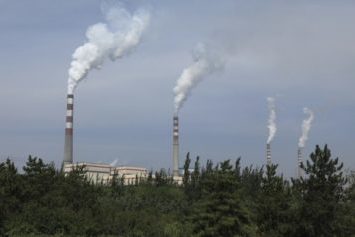On October 22, 2020, the EPA finalized a rule to streamline and improve the Clean Air New Source Review (NSR) permitting process. It specifically clarifies the process to evaluate when an NSR preconstruction permit is required when an existing major emitter facility makes changes.
 The long-awaited rule is called the Project Emissions Accounting Rule, which “changes when a project triggers the prevention of significant deterioration (“PSD”) program (applicable in areas that have attained the national ambient air quality standards) and the [NSR] program (applicable in non-attainment areas),” according to JD Supra.
The long-awaited rule is called the Project Emissions Accounting Rule, which “changes when a project triggers the prevention of significant deterioration (“PSD”) program (applicable in areas that have attained the national ambient air quality standards) and the [NSR] program (applicable in non-attainment areas),” according to JD Supra.
These two requirements become triggered when projects are classified as major modifications. Making this determination is a two-step process. Triggering NSR and PSD requirements means that a construction project will result in both a significant emissions increase and a significant net emissions increase.
Previously, sources were not allowed to use decreased emissions in their calculations to determine whether a construction project would result in significant increases. Instead, accounting for decreases in emissions (i.e., “netting”) only occurred in the second step of the process to determine whether the project would result in a significant net emissions increase. “Sources relying on such netting to avoid triggering the NSR or PSD requirements for a project may have needed to obtain a permit that contained federally enforceable limitations on the source’s operations,” according to JD Supra.
Now, major emissions sources “may consider both emissions increases and decreases associated with the project for determining when a significant emissions increase occurs,” according to JD Supra. This now occurs in the first step of the process.
The EPA expects this rule to reduce regulatory burdens.
But the new rule only applies to the EPA and federally delegated permitting authorities.
“It does not require states with approved State Implementation Plans (SIPs) to modify their program and regulations to adopt the change,” according to Lexology. “A major source seeking a modification must therefore first review if its state operates its own NSR program through an approved SIP and, if so, whether it intends to adopt a similar rule.”
However, before relying too heavily on this final rule, companies are well-advised to proceed with caution, as environmental groups are expected to challenge this rule in court. It also remains to be seen what effect the 2020 election will have on the rule and how EPA leadership and regulation will shift course under a Biden administration.
Other steps the EPA has taken to clarify and improve NSR permitting processes include guidance on:
- Communicating how the EPA would apply and enforce the Actual-to-Projected Actual Emissions Applicability Test;
- Clarifying the meaning of “Common Control” and “Adjacent” in the context of determining the scope of a stationary source;
- Identifying additional circumstances under which an area may be excluded from “Ambient Air”;
- Providing PM2.5 and Ozone Significant Impact Level (SIL) guidance; and
- Providing guidance on plantwide applicability limits (PALs).
Background
The 1977 Clean Air Act (CAA) amendments established the NSR preconstruction permitting program. “The program is intended to ensure environmental protection while allowing for economic growth by requiring the installation of state of the art technology when new plants are built or existing plants undergo major modifications since that is the most cost effective time to make such emission controlling improvements,” according to the EPA.
“Under the NSR program, before constructing a new stationary emission source or a modification of an existing major source, the source owner or operator must determine whether the new source will emit or the modification will increase air emissions above certain thresholds,” the EPA says. “If so, the source owner or operator must obtain a permit from a state permitting agency (or EPA in limited areas) that may require installation of pollution control technology or other emission controlling measures.”
Learn more on the EPA’s NSR Regulatory Actions page.
